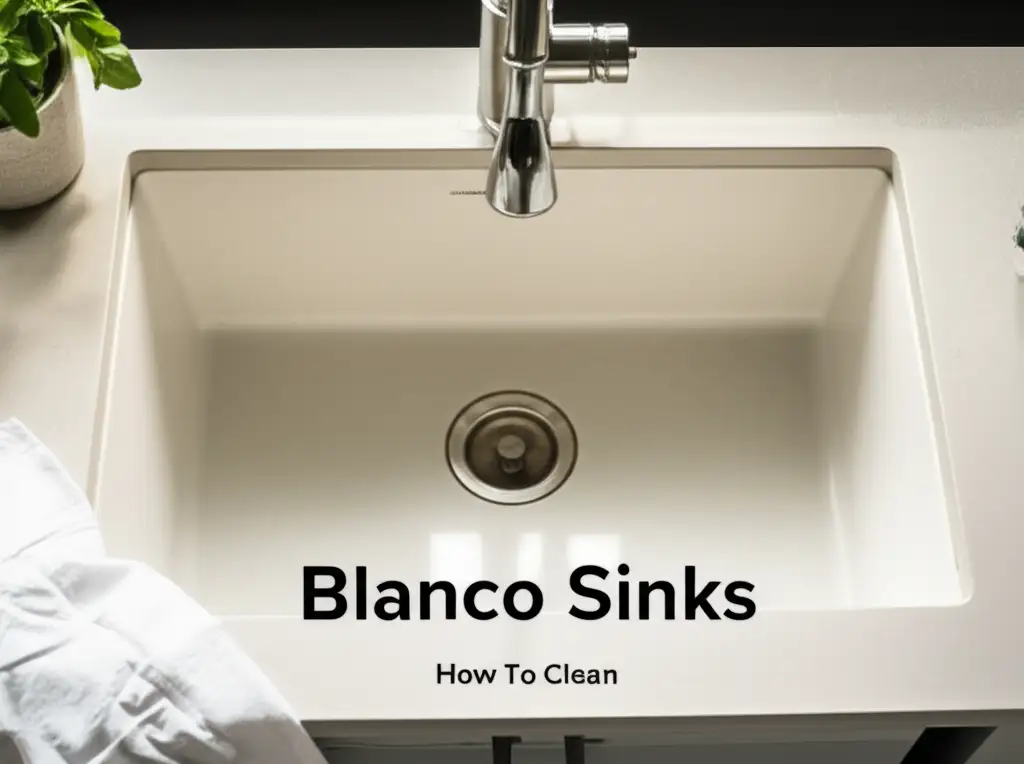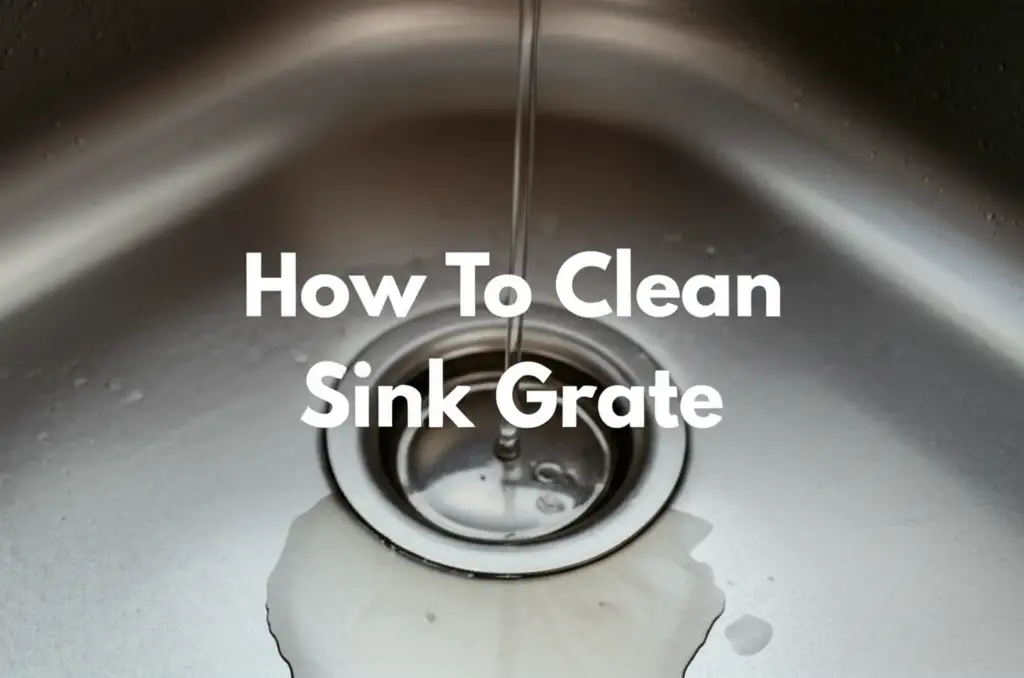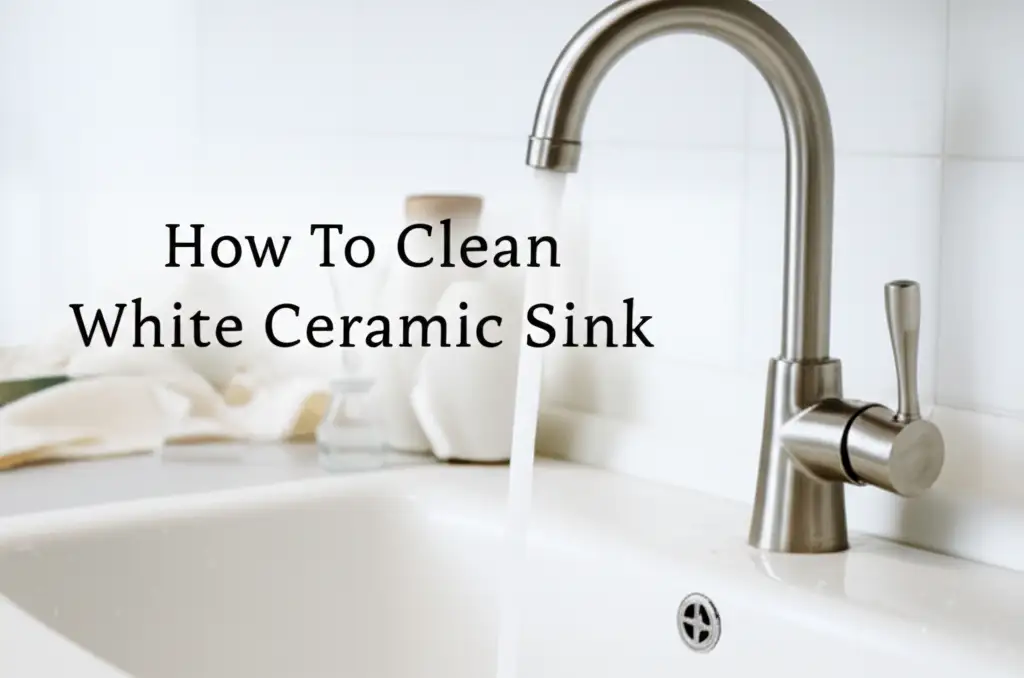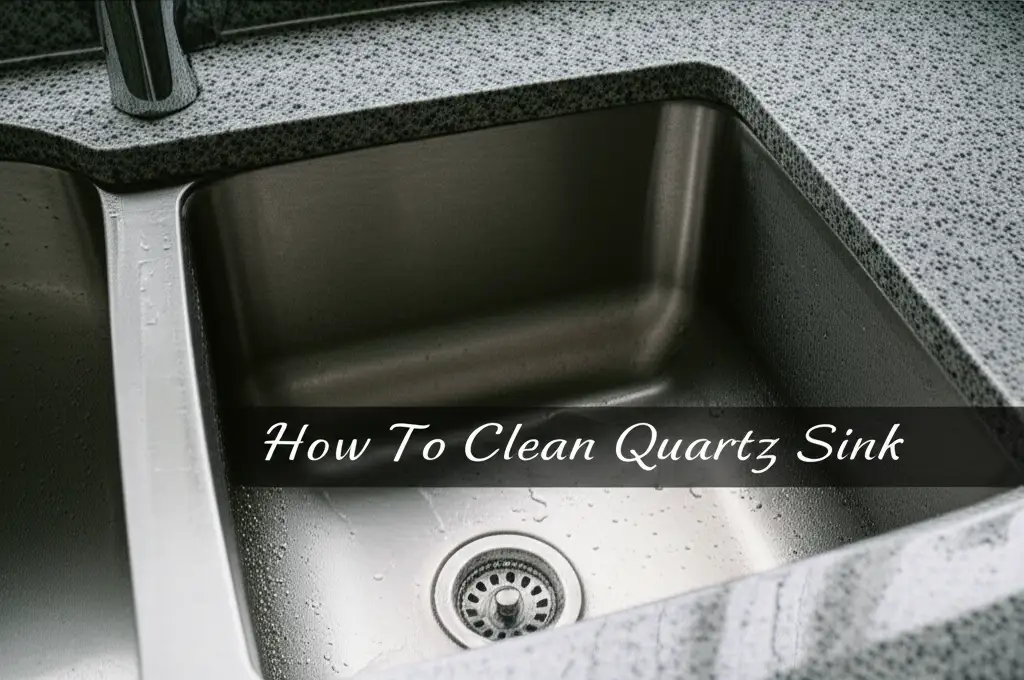· Kitchen Cleaning · 11 min read
How To Clean Granite Sink
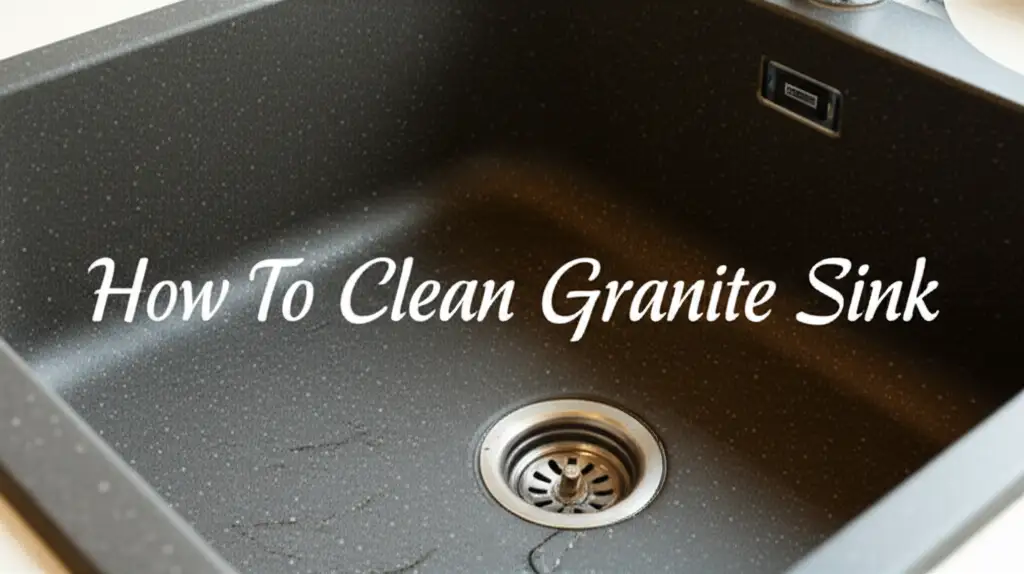
Unlock the Shine: How to Clean Your Granite Sink
Granite sinks bring beauty and durability to any kitchen. Their natural look adds a touch of elegance. However, these sinks need proper care to stay looking new. You might wonder how to keep them sparkling clean. Cleaning a granite sink requires specific methods to avoid damage. I am here to help you understand these methods.
This article will guide you through effective strategies. We will cover daily cleaning habits and deep cleaning techniques. You will learn how to tackle tough stains and restore your sink’s natural luster. We will also discuss preventing future issues. By the end, your granite sink will look its best every day.
Takeaway
Keeping your granite sink clean and shiny is simple. Here are the key steps:
- Daily Rinse: Wash away food particles and liquids after each use.
- Gentle Soap: Use mild dish soap and a soft cloth for regular cleaning.
- Tackle Stains Fast: Address spills and stains immediately to prevent setting.
- Deep Clean Often: Use specific methods for hard water and stubborn marks.
- Protect with Sealing: Seal your sink to guard against future stains and damage.
How do you clean a granite sink?
To clean a granite sink, use mild dish soap and warm water with a soft cloth for daily wiping. For deeper cleaning, make a paste of baking soda and water. Apply it, let it sit, then gently scrub. Rinse thoroughly. Always avoid harsh chemicals, abrasive scrubbers, and acidic cleaners to protect the stone.
Understanding Your Granite Sink: Care Basics
Granite sinks are popular for their strength and beauty. They often consist of composite granite, which mixes granite stone dust with resin. This blend makes them very durable. It also gives them a uniform color and texture. Real granite sinks are cut from solid stone. Both types of sinks need careful cleaning.
Proper care helps your sink last longer. It also keeps its surface looking beautiful. Without good cleaning, stains can build up. Hard water marks can make the surface dull. Food particles can stick and cause odors. Knowing your sink’s material helps you choose the best cleaning method. You want to clean effectively without causing damage.
Maintaining your granite sink is not hard. It simply requires a routine. Start with gentle cleaning products. Avoid harsh chemicals. Harsh cleaners can strip the sealant. They might also discolor the surface. Protect your investment with the right approach.
Daily Cleaning Routine for Granite Sinks
A simple daily cleaning routine keeps your granite sink looking good. This prevents stains from setting in. It also stops grime buildup. Daily care takes only a few minutes. It saves you time on deep cleaning later. I find this quick routine very helpful.
First, rinse the sink thoroughly after each use. Wash away any food bits or liquid spills. Use warm water for this. Second, wipe the sink down with a soft cloth or sponge. A small amount of mild dish soap works well. Dish soap is gentle enough for granite. Rub in circular motions. This helps lift light grime.
After scrubbing, rinse the sink again. Make sure no soap residue remains. Then, dry the sink completely with a clean towel. Drying prevents water spots and hard water stains. Hard water marks are common on granite. Learning how to clean hard water stains from granite is important. This simple routine protects your sink’s surface. It keeps it ready for the next use.
Deep Cleaning Your Granite Sink for Lasting Luster
Sometimes, your granite sink needs more than daily cleaning. Deep cleaning helps remove stubborn dirt. It restores the sink’s original luster. I recommend deep cleaning your sink once a week or every two weeks. This depends on how much you use it. This process tackles hidden grime.
A popular deep cleaning method involves baking soda. Make a thick paste with baking soda and water. Spread this paste over the entire sink surface. Let it sit for about 15-30 minutes. This allows the baking soda to lift dirt and mild stains. Gently scrub the paste with a soft brush or sponge. Work in small sections.
For disinfecting, you can use a diluted bleach solution (1 part bleach to 10 parts water) or hydrogen peroxide. Apply it, let it sit for a few minutes, then rinse very well. Always test on a hidden spot first. Make sure you rinse the sink very thoroughly afterwards. You want to remove all traces of the cleaning agent. Don’t forget to clean the faucet too; knowing how to clean a sink faucet keeps the whole area spotless. You can also clean the drain system for freshness. Learning how to clean a sink drain with vinegar can help with odors and buildup.
Targeting Tough Stains: How to Remove Stains from Granite Sinks
Granite sinks are durable, but stains can happen. Food, oil, and hard water are common culprits. Addressing stains quickly is key. The longer a stain sits, the harder it is to remove. Different stains need different approaches.
For food and oil stains, a baking soda paste often works. Mix baking soda with a little water to form a thick paste. Apply this paste directly onto the stain. Cover it with plastic wrap. Tape the edges down to keep the paste moist. Let it sit overnight. The baking soda will absorb the stain. In the morning, scrape off the dried paste. Then, rinse the area well. This method is effective for many organic stains. You can use similar methods for granite countertops stains.
Hard water stains look like white, chalky residue. These are mineral deposits. For these, try a mixture of equal parts water and white vinegar. Spray it onto the affected areas. Let it sit for a few minutes. Then, scrub gently with a non-abrasive sponge. Rinse thoroughly afterwards. Ensure you dry the surface completely. This prevents new water spots. For mold spots, a hydrogen peroxide solution can help. Mix 12% hydrogen peroxide with a few drops of ammonia. Apply it, let it sit, then rinse. This is similar to how to clean mold off granite headstone, but always dilute and test first for sinks.
Restoring Shine and Preventing Future Damage
Keeping your granite sink shiny means more than just cleaning. It involves protecting the surface. Sealing your granite sink is a vital step. A good sealant creates a barrier. This barrier helps repel liquids and stains. It makes cleaning easier too. Most granite composite sinks are pre-sealed. However, solid granite sinks need regular sealing. Even composite sinks can benefit from occasional re-sealing.
To seal your sink, clean it thoroughly first. Make sure it is completely dry. Apply a granite-specific sealer according to product instructions. Use a soft cloth to apply it evenly. Let it penetrate for the recommended time. Then, wipe off any excess. Buff the surface gently. I typically re-seal my sink every 6-12 months. This depends on usage and wear. You can learn more about how to clean granite before sealing to prepare the surface correctly.
Beyond sealing, simple habits prevent damage. Always use cutting boards. Do not cut food directly on the sink surface. Avoid placing hot pots or pans directly in the sink. Use trivets or heat pads. Hot items can damage the resin in composite sinks. They can also affect the sealant. Wipe up spills immediately. This stops stains from setting. These steps keep your granite sink looking like new for years.
Troubleshooting Common Granite Sink Problems
Even with good care, your granite sink might show issues. Dullness and streaks are common complaints. Sometimes, minor scratches can appear. Understanding these problems helps you fix them. It also helps prevent them from getting worse.
If your granite sink looks dull, it might be due to soap residue. Mineral buildup from hard water can also cause dullness. Try deep cleaning with baking soda. Then, rinse very well. After rinsing, buff the sink with a dry, clean microfiber cloth. This can bring back its natural sheen. Regular drying after use also prevents dullness. For streaks, ensure you are rinsing thoroughly. Also, dry the sink completely. Leftover water droplets can dry and leave marks.
Minor scratches in composite granite sinks are often not true damage. They can be metal marks from pots or utensils. Use a nylon brush with a mild abrasive cleaner, like Bar Keepers Friend, to gently scrub these marks. Always test in a hidden area first. For deeper scratches in solid granite, professional help might be needed. Preventing problems is always better. Using protective sink grids can stop scratches. Avoid dropping heavy items into the sink. These actions keep your sink in top condition.
Do’s and Don’ts for Granite Sink Cleaning
Keeping your granite sink beautiful is straightforward with these rules. Following them helps preserve its look and longevity. Avoid common mistakes to prevent damage.
Do’s:
- Do use mild dish soap and warm water for daily cleaning. This is gentle and effective.
- Do wipe down your sink daily after each use. This prevents buildup and stains.
- Do dry your sink completely after cleaning and use. This stops hard water spots.
- Do use baking soda paste for deep cleaning and stain removal. It is a natural abrasive.
- Do re-seal your granite sink regularly if recommended by the manufacturer. This protects the surface.
- Do use a soft cloth or sponge. Microfiber cloths are excellent choices.
Don’ts:
- Don’t use harsh chemicals like ammonia, bleach (undiluted), or strong acids. These can damage the surface and sealant.
- Don’t use abrasive scrubbers like steel wool or scouring pads. They can scratch granite.
- Don’t let acidic foods or liquids sit on the sink surface for long periods. Lemon juice, vinegar, and tomato sauce can etch the stone.
- Don’t use wax-based polishes. They can build up and create a cloudy film.
- Don’t use strong drain cleaners that contain harsh chemicals. They can harm the sink’s finish.
- Don’t ignore spills. Clean them up as soon as they happen.
FAQ Section
Q1: Can I use bleach to clean my granite sink? A1: You can use a highly diluted bleach solution (1 part bleach to 10 parts water) for deep cleaning or disinfecting. Always rinse thoroughly afterward. Avoid using undiluted bleach or letting it sit for too long. Test it in an inconspicuous area first to ensure it does not cause discoloration or damage to your sink’s finish.
Q2: How often should I deep clean my granite sink? A2: Deep clean your granite sink weekly or bi-weekly. This depends on how often you use it. Regular deep cleaning prevents tough stains and mineral buildup. It also helps maintain the sink’s shine. Daily cleaning is still important to manage everyday grime.
Q3: What causes white film or dullness on my granite sink? A3: White film or dullness is usually from hard water mineral deposits or soap scum buildup. You can remove these using a baking soda paste or a solution of white vinegar and water. Make sure to rinse and dry the sink completely after cleaning to prevent future film.
Q4: Is it safe to use vinegar on a granite sink? A4: You can use diluted white vinegar on granite sinks for hard water stains or general cleaning, but use it sparingly. Rinse very well and dry immediately. Undiluted vinegar or prolonged exposure can potentially etch or dull the stone’s surface, especially if it’s not well-sealed.
Q5: How can I prevent scratches on my granite sink? A5: To prevent scratches, avoid dropping heavy items into the sink. Do not use abrasive scrubbers or sharp objects on the surface. Using a sink grid at the bottom can offer protection from pots and pans. Always use cutting boards for food preparation.
Q6: Do granite sinks need to be sealed? A6: Many granite composite sinks come pre-sealed. However, solid granite sinks and some composite types benefit from regular re-sealing. Sealing creates a protective barrier. This barrier helps repel stains and liquids. It makes cleaning easier and extends the sink’s life.
Conclusion
Keeping your granite sink clean and beautiful is simple. It does not require complex steps. By following a consistent routine, you ensure its lasting elegance. Start with daily cleaning habits. Use mild soaps and soft cloths. This prevents everyday grime from becoming a problem.
For tougher issues, deep cleaning methods work wonders. Baking soda and specific stain removal techniques help restore your sink’s appearance. Remember the importance of sealing. Sealing protects the surface from future damage. It makes your cleaning efforts more effective.
You now have the knowledge to properly clean your granite sink. Embrace these simple yet powerful strategies. Your kitchen sink is a centerpiece. Give it the care it deserves. A clean granite sink enhances your entire kitchen. Start your cleaning journey today for a brighter, cleaner home.
- granite sink cleaning
- sink maintenance
- stain removal
- kitchen care
- stone cleaning

